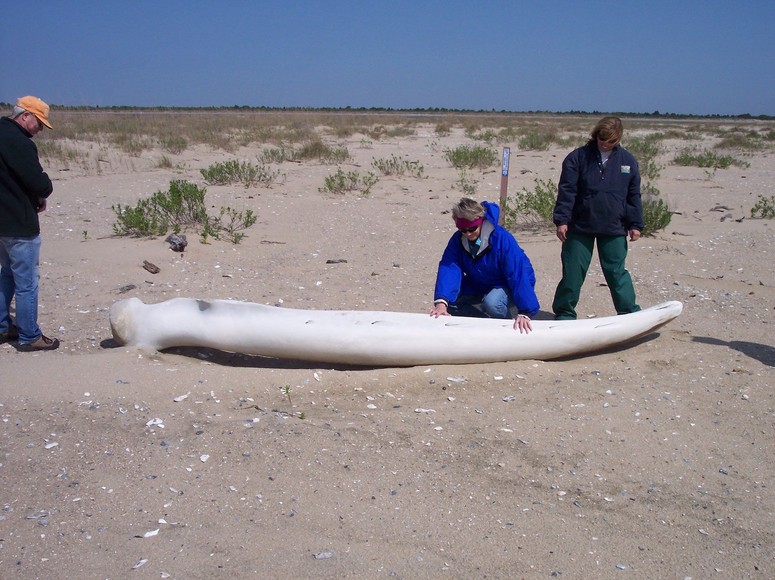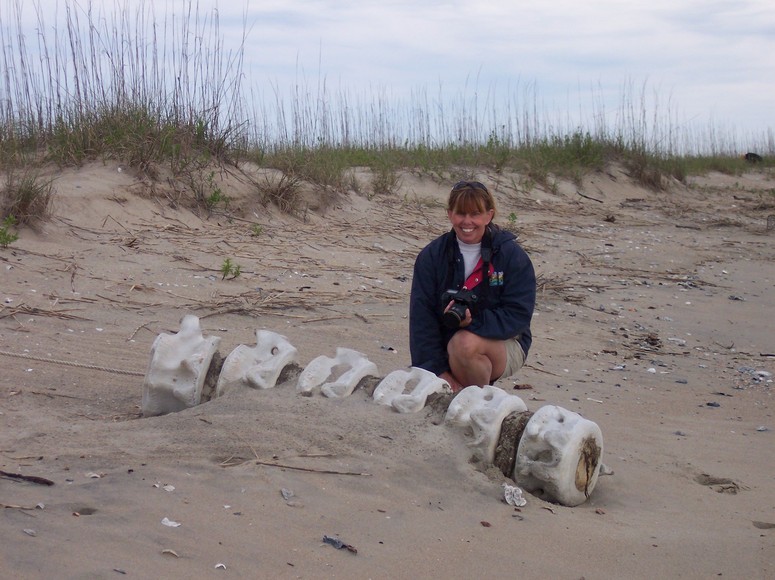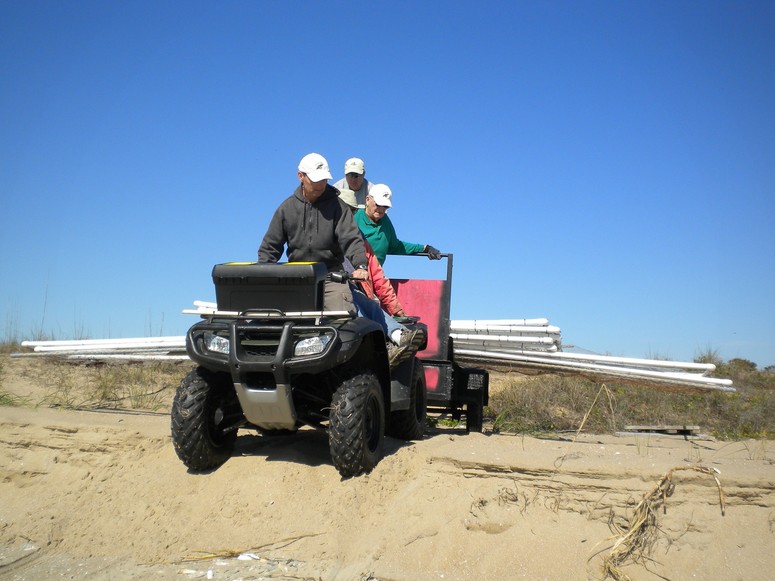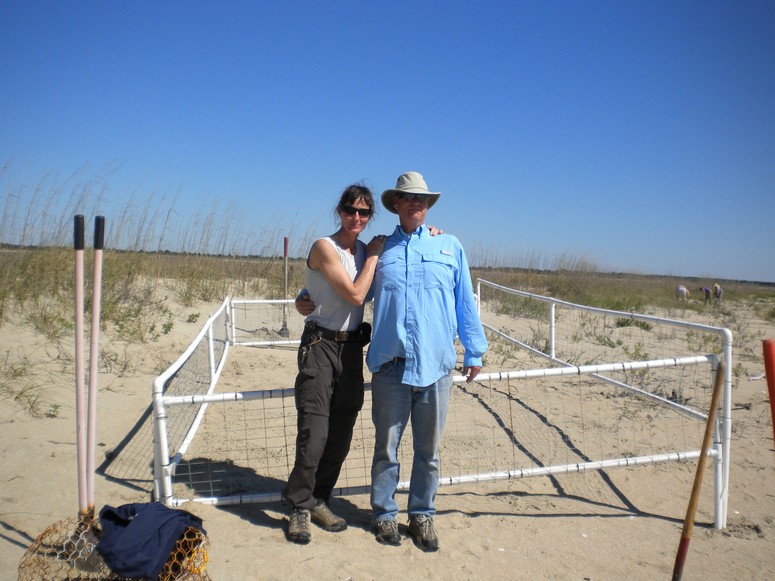The building of hatcheries for loggerhead turtle nests on Cape Island has been an annual event in April that I have experienced since 2005. This year’s crew brought a number of years of experience, not just from the USFWS staff but also the volunteers. It was led again by wildlife biologist Sarah Dawsey, now in the role of manager of Cape Romain National WIldlife Refuge. The projection of number of nests for this year has been promising.
The nine of us split up in two boats for the ride over from the Ashley Landing in McClellanville to the refuge dock located at Cowpen Point on Cape Island (see map).

A front had passed through the Lowcountry the day before, and we were witness to a brilliant blue sky with no clouds, and cool and extremely clear air. If classified, pristine would be a fitting label. We wound through the familiar creeks and bays, with one noticeable difference from last year being a marked proliferation of buoys marking crab traps.
The cerulean sky contrasted with the new green waves of sea ox-eyes in the ride across the island on ATV’s. Small hercules’-club or toothache-trees dotted the dunescape, fleshed out in new greenery. The views along the track were stunning across the dune field to the island’s backside and Cape Romain harbor, with the two lighthouses standing to the southwest. In the last section of track, we came over a large dune, and arrived at the staging site for the nest relocation program.
From this vantage point I craned my neck to the south, hoping to get a glimpse of the latest cetacean fatality – a washed-up whale last seen about a mile to the south. It was originally thought to be a humpback, but a close inspection by biologists of a flipper confirmed it to be a North Atlantic right whale. The demise of one of these whales is a tragedy, since only 300-400 remain in the world. This thirty-seven foot marine mammal appeared to have died from a primary threat to right whales – entanglement in fishing gear. Ship strikes are the other main threat. Five years ago, as we headed out for hatchery building, we had anticipated seeing pieces of the skeleton from a humpback whale.

500 lb. jawbone of humpback whale, 2006.

Section of vertebral column, and Karen Beshears, 2006.
It was determined that the cause of death of that humpback was a collision with a ship. We would not have time on this day to search out the remains, if any, of the right whale, already badly deteriorated and breaking up.
Sarah Dawsey headed north on one of the ATV’s with a crew to locate the new hatchery sites, while the rest of us loaded up hatchery parts, some twenty feet wide, on one of the trailers rigged out with supports for the pieces. Jerry Tupacz carefully rode the ATV, with the attached trailer carrying hatchery tops and sides stretching out like wings, down the steep scarp to the beach, and then north for the hatchery building.

In work groups we began the well known tasks: preparing the areas, laying out and erecting the sides, digging out the sides for the screen wire to keep predators from tunneling under, and attaching this wire to the sides. More parts were moved from the supplies area, until most of the needs for the six hatcheries were located at the building site Three hatcheries stood before lunch, with work well under way to completing these and readying them for occupancy for nests.

Hatchery in process with refuge manager Sarah Dawsey, and volunteer George Leydic.
Lunch on the beach. Offshore breeze, small swell, and smooth waters. There was anticipation by the crew of a loggerhead sighting, inspired by lunch sightings in previous years. Jerry made the first – one hundred yards out. The next sighting was just thirty yards out, and the nine of us all saw the peering head. The first sighting; to be followed next month by the first crawl, and the first nest. We greeted the turtle to these shores, and vice versa, this species preceding ours in time. I had a last sighting of this turtle within ten yards of the sand. Welcome back to Cape Island – we will do our best to care for your nests, and your young before they begin their great journey.

After the erection and partial completion of five hatcheries, with the capacity for holding 325 nests, we packed up and headed south. Pairs of oystercatchers moved ahead of us. Sarah Dawsey had earlier cautioned us to watch for eggs blending in to the dune area where we worked. I had watched a pair chase several vultures away, and learned that a vulture was observed last season taking oystercatcher eggs. Minks last year had destroyed all the eggs in the shorebird nesting area on the north end of the island.
After dropping off some of our gear, we surmounted the high dune to make our trip back across the island to the dock. From the dune’s vantage point, I looked south at the narrow section of island where the break occurred during Hurricane Hugo. So fragile, so seemingly inadequate for storm waves, and the waves of nesting turtles coming this spring and summer. This island continues to be the South Carolina mecca for loggerhead nesting, averaging a third of the nests on the entire SC coast. Where to put all these nests is a great problem, a puzzle labored over each year by Sarah Dawsey and company. Without relocation many of the nests would not be viable, and this endangered species needs all the help it can get. So it starts again.